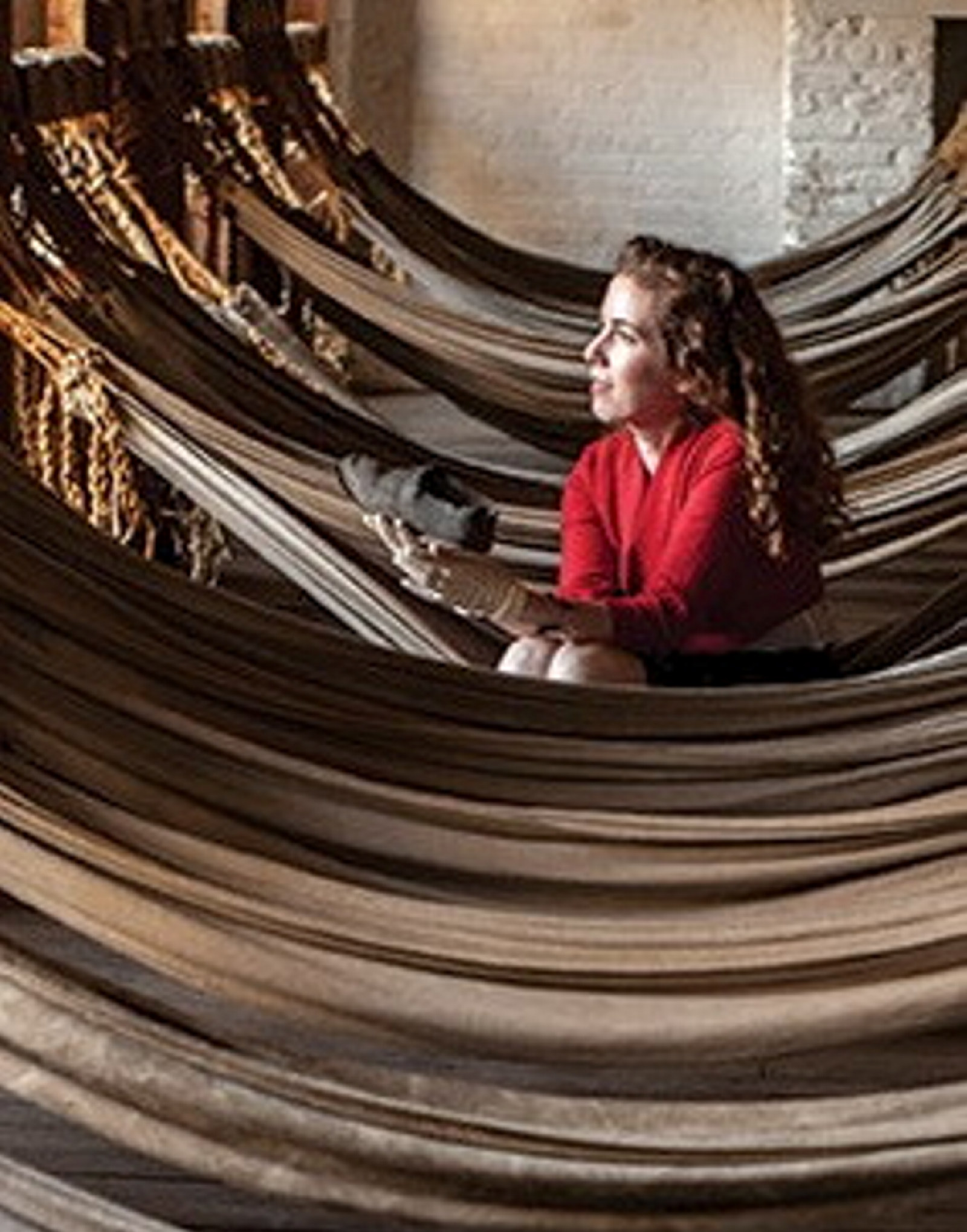1820 - Day in the life of a convict
By 1820 the days of relative freedom for convicts in Sydney were over. Now, unmarried ‘government men’ were ordered directly into the new Prisoners’ Barracks, where Deputy Superintendent of Convicts John Gandell would control their work hours and their whereabouts. The barracks was not a prison, just a place to sleep and eat, but the rules and regulations might have made living here feel like an additional punishment. The convicts knew of institutions like this back home, and distrusted them because of the harsh living conditions and loss of freedom.
At least everything was fresh inside – the window panes glimmered in the sunshine, the flax hammocks were strong and taut, the scent of the recently cut eucalyptus timbers lingered, and the white lime-washed walls were clean and hygienic. The main building had 12 cavernous sleeping wards, designed to hold 600 men, but now – just a year since the barracks had opened – it proved to be too small, having to hold as many as 1000 men each night.1 Convicts who were married or had established businesses were permitted to remain living out of barracks in their family homes, and the small number of women convicts enjoyed much more freedom, unless they were badly behaved and were sent to the Female Factory.
Clothing
New arrivals at the barracks often had boxes and trunks with a few precious possessions they had brought with them. But with 1000 men in the sleeping wards, there was no space for cupboards. Their boxes were taken, as well as the clothes off their backs, to be put away in storage, and the storekeeper handed them their uniforms. Stripped of their individuality and personal belongings, the men must have truly felt their loss of liberty.
...on their arrival their boxes & cloaths are taken from them & put by in a store room in charge of the Deputy Superintendent. Each convict keeps his own key.
Major George Druitt, 18192
This year, the convicts wore a cotton shirt, white ‘duck’ trousers, a blue coarse woollen jacket, a yellow and grey waistcoat, stockings and shoes, a neckerchief, and a woollen or leather cap, all clearly marked with the government ‘broad arrow’ and the letters ‘P.B.’ (Prisoners’ Barracks), to make the men and their clothing identifiable. The convicts were supposed to receive two sets of clothing per year, but they only got one set at a time so they would not sell their second set on the black market.3 The previous year, clothing issues had been few and far between, so by now many of the convicts complained they were dressed in rags, or had garments missing.4
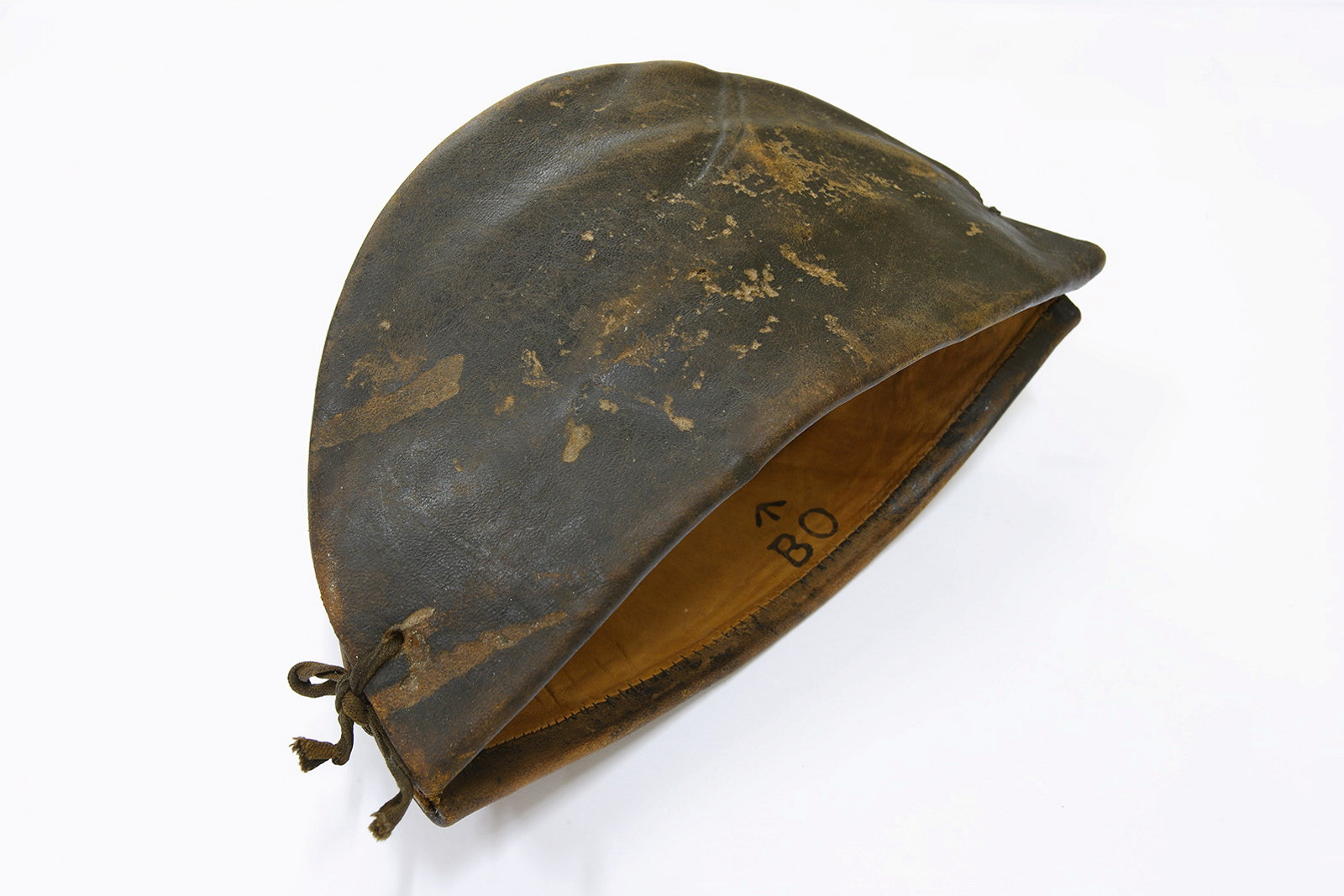
Convict Sydney
Convict Cap
A hat was known as a castor or a kelp in the convict 'flash' slang language
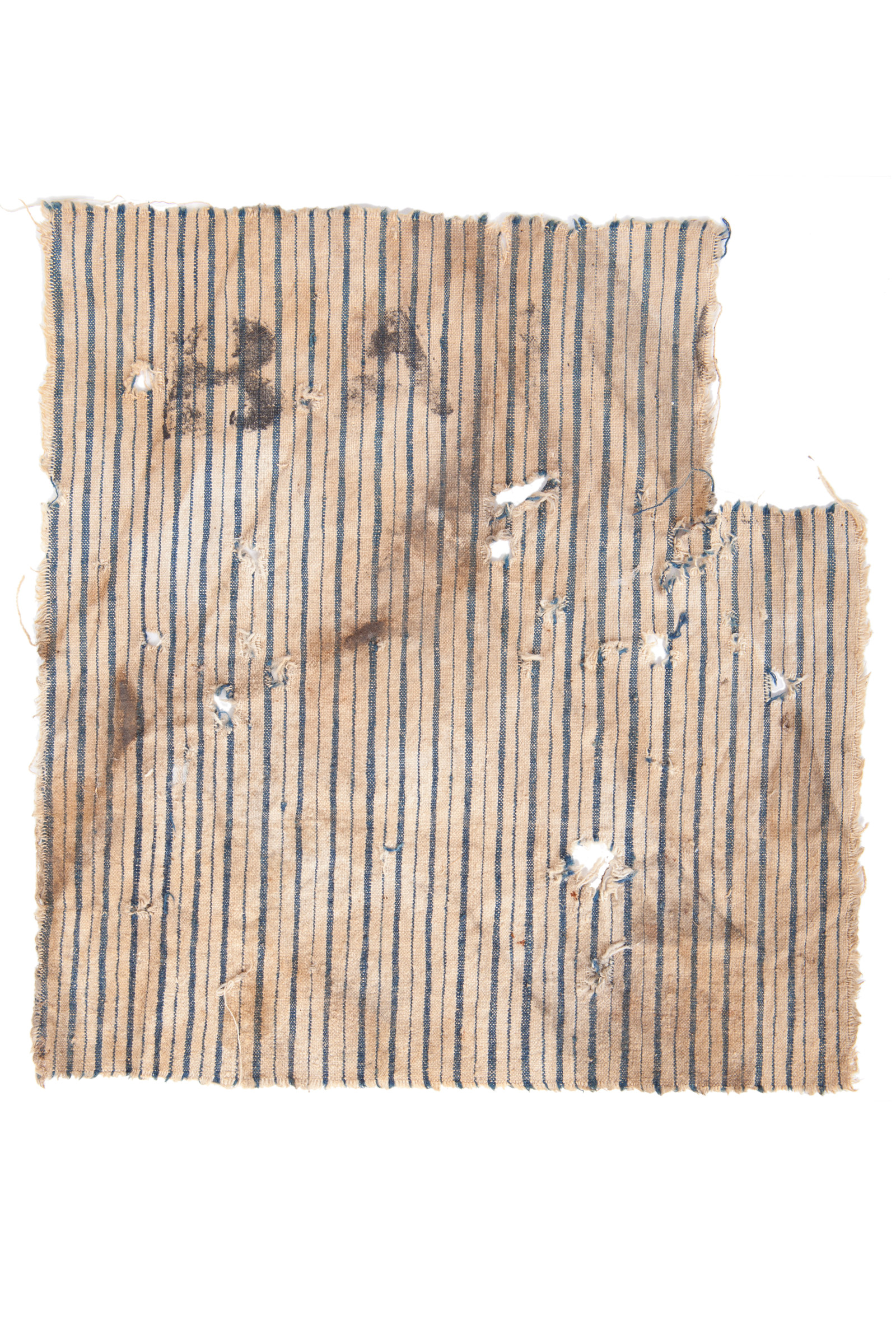
Convict Sydney
Convict shirt scrap, ‘B.A.’
This square scrap of striped convict shirt is curiously stamped with the letters ‘B’ and ‘A’
On Mondays and Fridays the laundry along the eastern wall was awash with filthy trousers and shirts,5 which were afterwards hung out in the sun in the drying yard. To be sure each man received his own shirt back, with its particular rips, holes and stains, each shirt was marked with his initials.6 In September and October of this year, convicts John Wilford and Stephan Curran stole others’ clothing.7 It was most likely the stamped initials that gave them away, and led to their whipping on the flogging triangle.
Breakfast
Convicts awoke at sunrise each morning with the ringing of the yard bell.8 Rising from their hammocks, they shuffled from their wards and down the staircases to the mess rooms on the south side of the compound, where their breakfast of salty meat stew was bubbling away in enormous pots. All of it seemed a bit like being back on board the transportation ships. While the hungry men crowded into timber booths in messes of six men,9 former-convict-turned-Deputy Superintendent John Gandell inspected the stew to see if it was well cooked and that each man received his breakfast portion of half a pound (227 grams) of meat.10
A prisoner for his labor receives 7lbs of beef and 7lbs of flour [per week] from the King’s stores, and an overseer half as much more…
Convict John Slater, 181911
Food at the Barracks
Jacqui Newling talks through how food preparation and management would have changed for convicts when they moved into the Hyde Park Barracks in 1819.
0:33
1:18
1:07
1:01
Work
At the second sounding of the bell, the convicts assembled into work gangs in the yard. Under the watch of the youthful principal overseer , each man was stopped at the gate and searched for stolen property.12 Marching into town, the gangs headed to worksites, workshops, quarries and other places of toil and industry. Many of these ‘government men’ had been hand-picked by Governor Macquarie, with his eye for those with Aside: useful building skills.
...they are all left to the Superintender [sic] to dispose of as he thinks proper… if the Superintender knows he has a good trade, he will keep him for Government…
Convict ‘Mellish’, 182513
At the brickfields and building sites, master brickmakers and bricklayers like worked among clay and brick dust, while at the lumberyard, other skilled workers went about their specialised trades such as carpentry, blacksmithing, coopering, leatherwork, tailoring and shoemaking. Down at the docks, others were building boats, making rope, tanning and sailmaking. Some men carted water and stores, loaded and unloaded ships, drove bullock teams and served as boatmen. Unskilled convicts toiled under the sun while building, clearing land, ploughing, harvesting, gardening, fencing, cutting wood and . Road and mining gangs built roads and bridges, . Saturdays were set aside for the men to work for themselves.
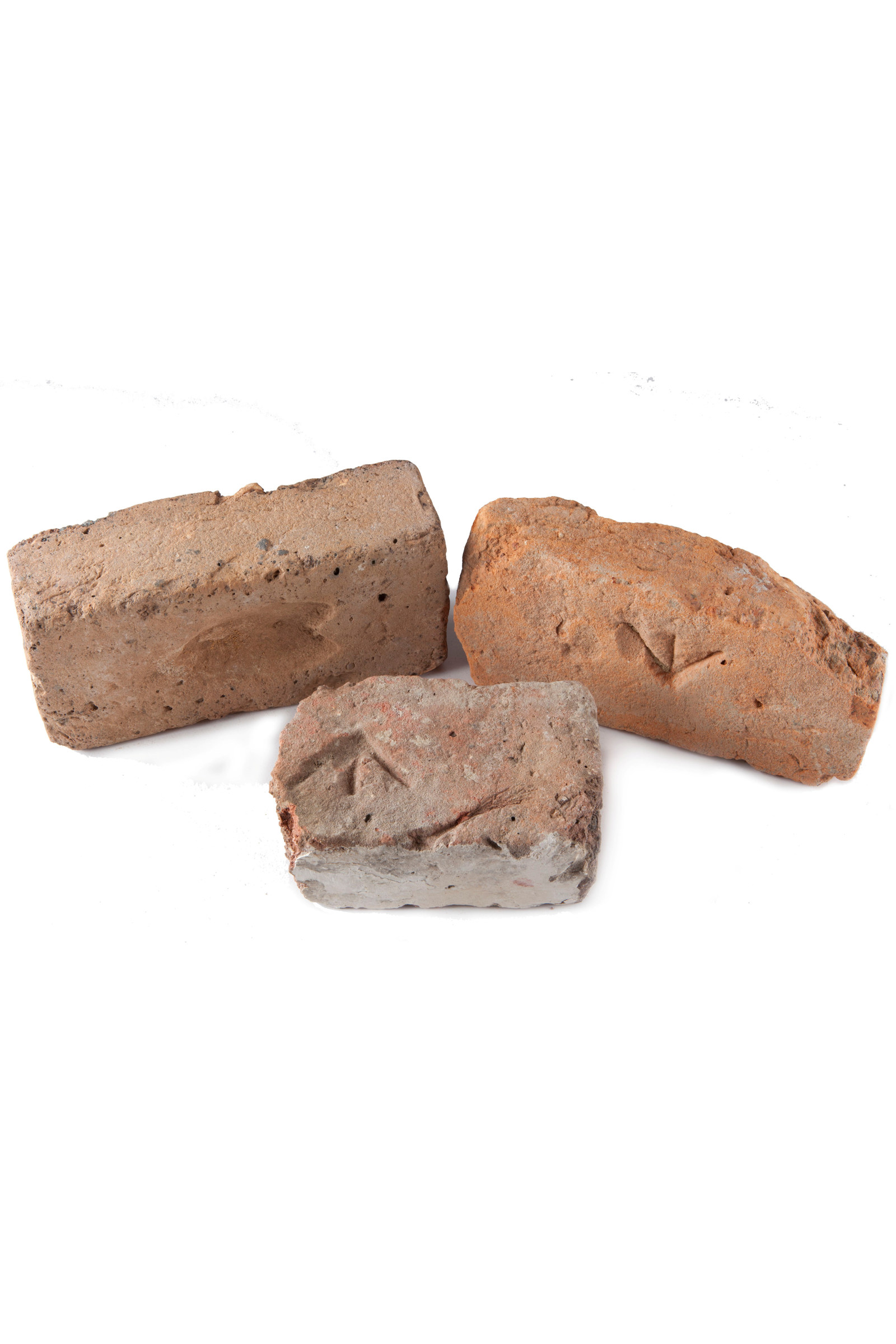
Convict Sydney
Sandstock Bricks
Sandstock bricks such as these were the building blocks of Governor Macquarie’s ambitious public works scheme for Sydney
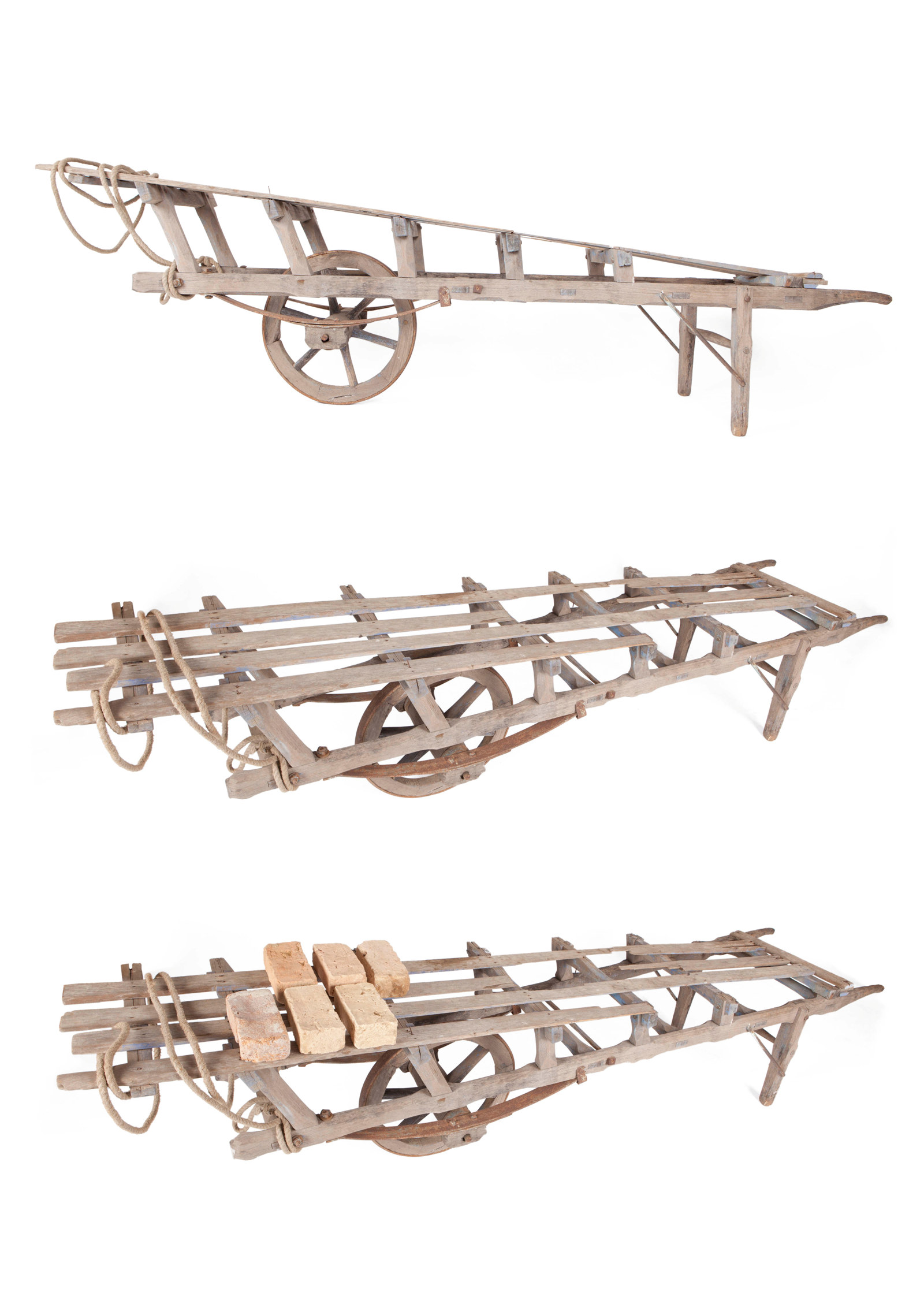
Convict Sydney
Hack barrow
Convict brickmakers working at the Brickfields (now Haymarket) used hack barrows like this one, stacking 20 or 30 wet bricks on the timber palings along the top, for transporting them from the moulding table to the ‘hack’ yard for drying
I … being a strong and willing hand to work, was sent to the ‘stone quarries’ to toil, being guarded to work, all day the same …
Convict Jack Bushman, remembering 181814
A large proportion of convicts were born to city life, and had trained in highly specialised trades, but here in the colony many found themselves assigned to rural or labouring jobs that were a mismatch with their trade.
It is no uncommon matter to see a jeweller, a clerk, or a tailor, with a reaping-hook in his hand cutting grain, or with an axe falling a tree.
Convict John Slater, 181915
Hospital
Hard physical labour and hazardous work conditions often resulted in serious injuries and illnesses that required treatment at the notorious ‘Rum Hospital’. Convicts liked to call it the ‘Sidney [sic] Slaughter House’, due to the excessive use of bloodletting by cupping by the resident surgeon William Redfern and his staff, not to mention the unhygienic conditions that meant convicts might not make it out alive.
Convict Matthew Heyland feared being mistreated at the hospital, but one day a ‘lump’ in his stomach forced him to visit. Later, back in the barracks wards, he cried out in pain. In a violent sweat, he was carried downstairs, and before he died, he said to the wardsman, ‘Oh, the Doctors have killed me’.16
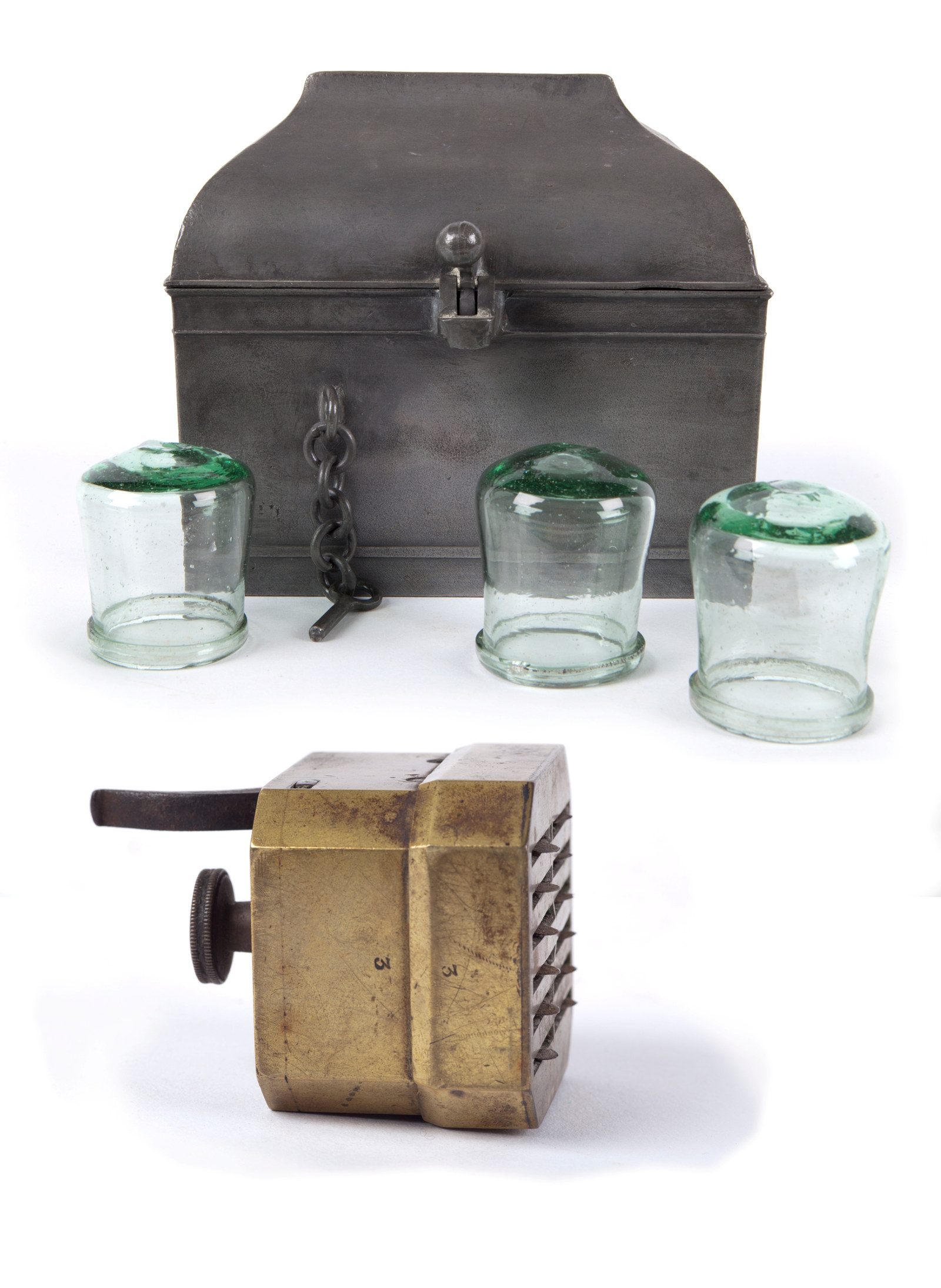
Convict Sydney
Cupping glasses & scarificator
These cupping glasses are of the type that was used in the treatment of convict patients at the General ‘Rum’ Hospital
Dinner
In the bakehouse in the northern buildings, the oven fires roared as the bakers prepared several hundred loaves of bread, to be served the next day (so already stale).17 Fires under the kitchen cauldrons were stoked and re-stoked as meat and a scattering of vegetables stewed quietly away. By 1pm, the nearby gangs had returned for dinner (lunch), for their remaining ration of 1 pound (454 grams) of salt beef or mutton (or a smaller portion of pork), while meals for the rest were carted out to their worksites.18
Evening muster
Marching back to the barracks at sunset, the work-weary men were again searched at the gate, this time to ensure no illegal liquor was being brought in.19 About once a week, one or two convicts didn’t show up and their names would appear in the papers with a call for their apprehension. Some were successful: in December 1820, word went out for the capture of barracks convicts William Russell and William Atkins, who had escaped the colony in an open boat.20 Convict latecomers or no-shows soon found themselves tending the vegetable garden in their free time on weekends, as punishment.21 Laid out in a grid pattern just south of the barracks, the garden grew vegetables for the prisoners’ stew.
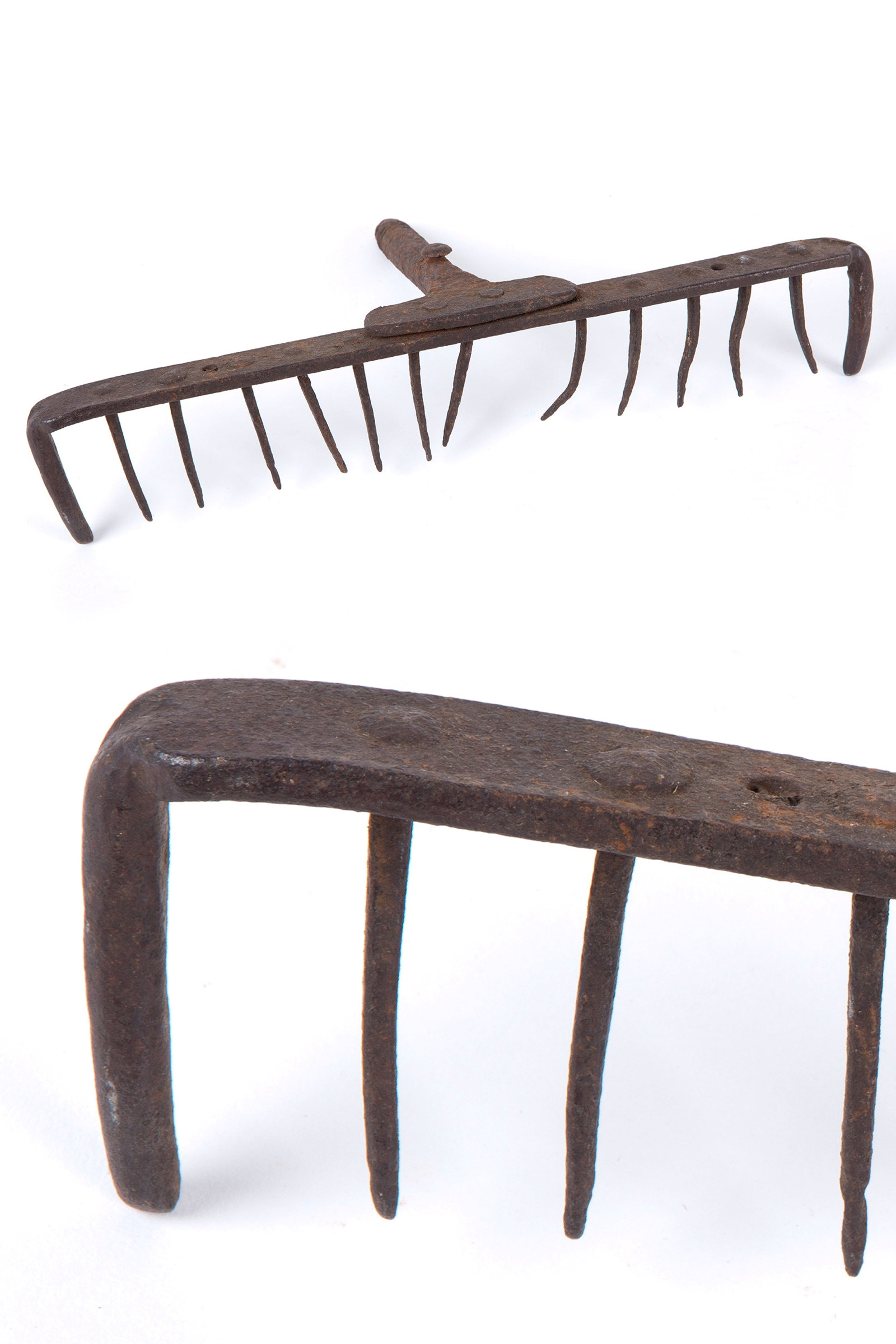
Convict Sydney
Rake head
Convicts working in the garden just south of Hyde Park Barracks would have used tools like this hand-forged iron rake for clearing and preparing the soil for planting
After the muster, convicts loitered around the yard or huddled around fires in recreation sheds in winter,22 smoking pipes, chatting in their ‘flash’ language, and whiling away the time. Sometimes a few might have even sung a song, accompanied by clapping and the twang of a ‘jaw harp’.
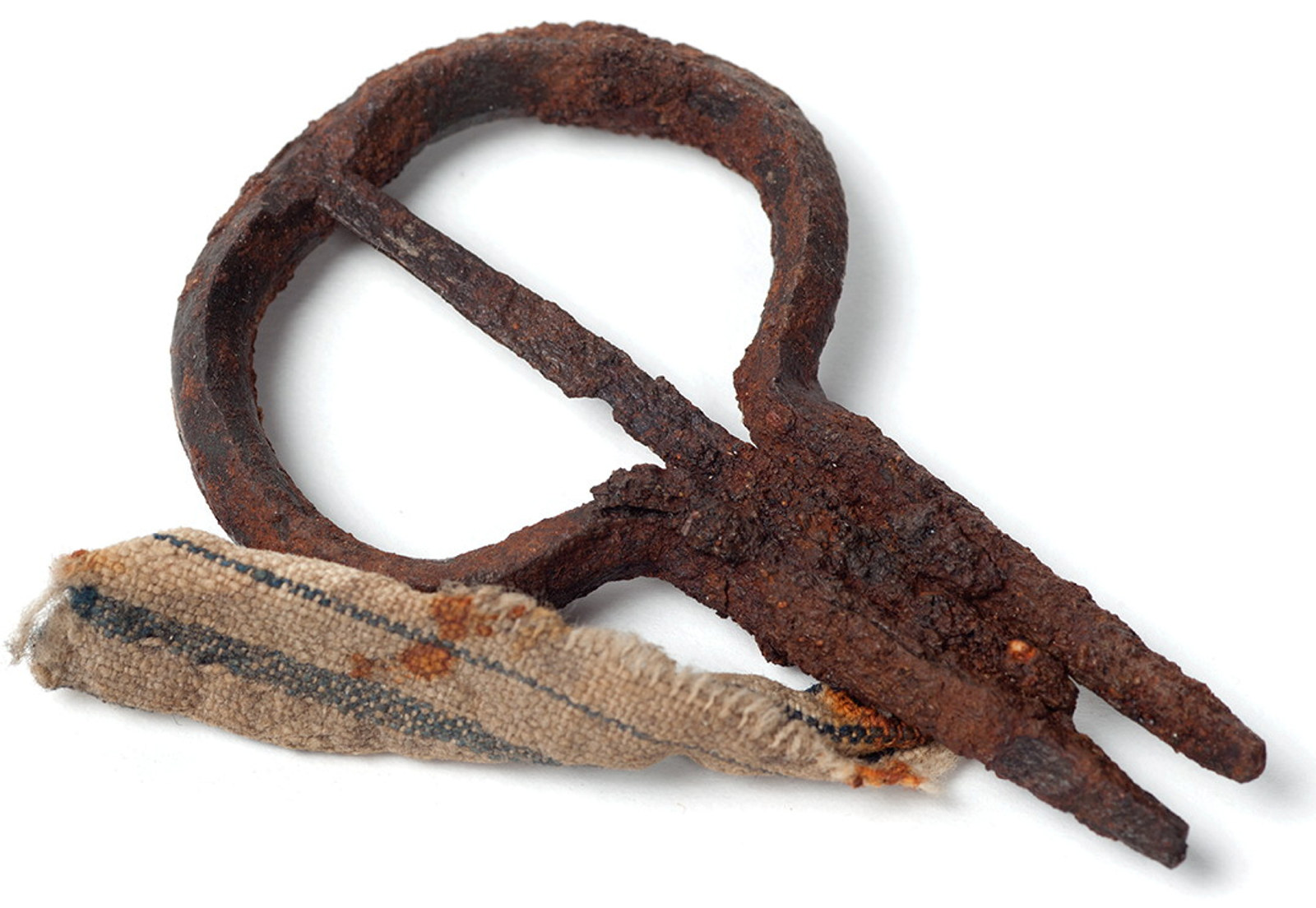
Convict Sydney
Jaw harp
This iron jaw harp was found by archaeologists at Hyde Park Barracks alongside other convict-era objects
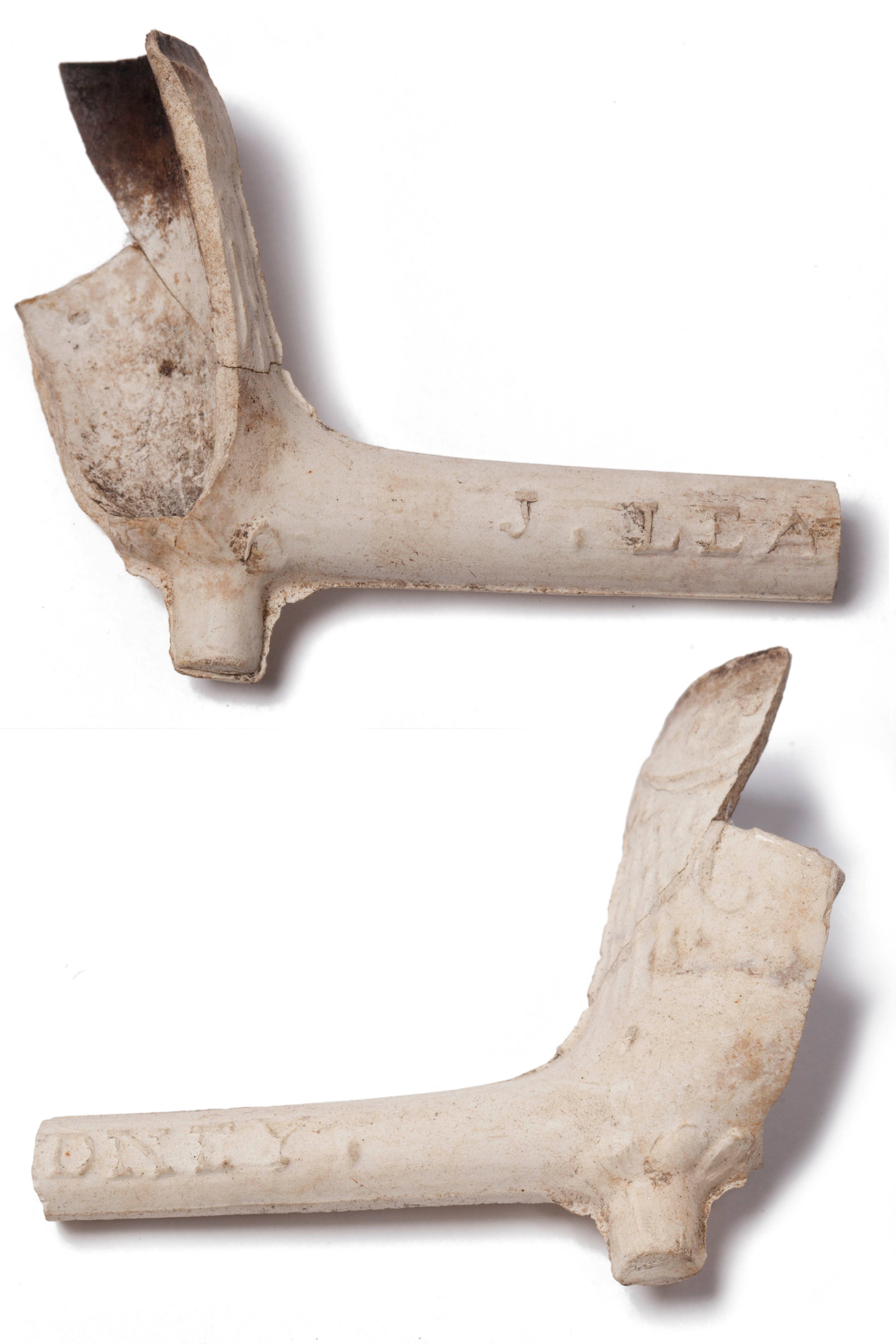
Convict Sydney
Clay tobacco pipe
There were 1500 fragments of convict-era clay tobacco pipes recovered by archaeologists from Hyde Park Barracks
In the wards
As the 8.30pm bell sounded, the convicts trudged up the staircases to their allocated wards and slumped into their numbered hammocks. Each area was lit by a hanging oil lamp, but at about 8.45 it was lights out.23 Some men might have stayed awake chatting and telling yarns, while others contemplated their miserable lives as prisoners, or fell asleep quickly out of exhaustion, dreaming of home, family and freedom. The doors were left open to allow access to the privies (toilets, along the eastern wall),24 which also allowed the convicts to roam freely in the dark.
… if I could but obtain my liberty, to be once more a freeman, what I would do… I resolved that I would be good so that I might take the first opportunity of stowing myself on board a ship, to return to my native country.
Convict Jack Bushman, remembering 181825
Notes
1. Sydney Gazette (SG), 3 February 1825, p2.
2. Major George Druitt, 29 October 1819, in John Ritchie (ed), Evidence to the Bigge Reports, Heinemann, Melbourne, 1971, vol 1, pp11–12.
3. Hutchinson to Bowman, 9 January 1820, J T Bigge, Report of the Commissioner of Inquiry into the State of the Colony of New South Wales, 1822, Appendix, 6234, Bonwick Transcripts Box 26.
4. Governor Macquarie to Secretary of State for the Colonies, 28 February 1820, Governor’s Despatches, March 1819 – September 1820, SLNSW MLA1192, reel 518.
5. SG, 1 May 1819, p1.
6. SG, 1 May 1819, p1.
7. SG, 23 September 1820, p4; SG, 14 October 1820, p3.
8. SG, 1 May 1819, p1.
9. SG, 1 May 1819, p1.
10. SG, 1 May 1819, p1.
11. John Slater, A description of Sydney ... with some account of the manners and employment of the convicts, Sutton & Son, London, 1819, p8.
12. SG, 1 May 1819, p1.
13. Convict ‘Mellish’, ‘A convict’s recollections of New South Wales’, London Magazine, vol 12, May 1825, pp51–2.
14. Jack Bushman, Passages from the life of a lifer, Chapter II, Moreton Bay Courier, vol 8, no 741, 9 April 1859, p4.
15. Slater, p7.
16. Inquest on the body of Matthew Heyland, 31 July 1820, Colonial Secretary’s Correspondence, NSW, Series: NRS 898; Reels 6020-6040, 6070; Fiche 3260-3312, 313-6.
17. SG, 1 May 1819, p1.
18. SG, 1 May 1819, p1.
19. SG, 1 May 1819, p1.
20. SG, 30 December 1820, p2
21. SG, 1 May 1819, p2.
22. J T Bigge, Report of the Commissioner of Inquiry into the State of the Colony of New South Wales, London?: Ordered, by the House of Commons, to be printed, 1822, p22.
23. Bigge, Report, p22.
24. Bigge, Report, p22.
25. Bushman, p4.
Convict Sydney © Sydney Living Museums, 2017
Published on
Related
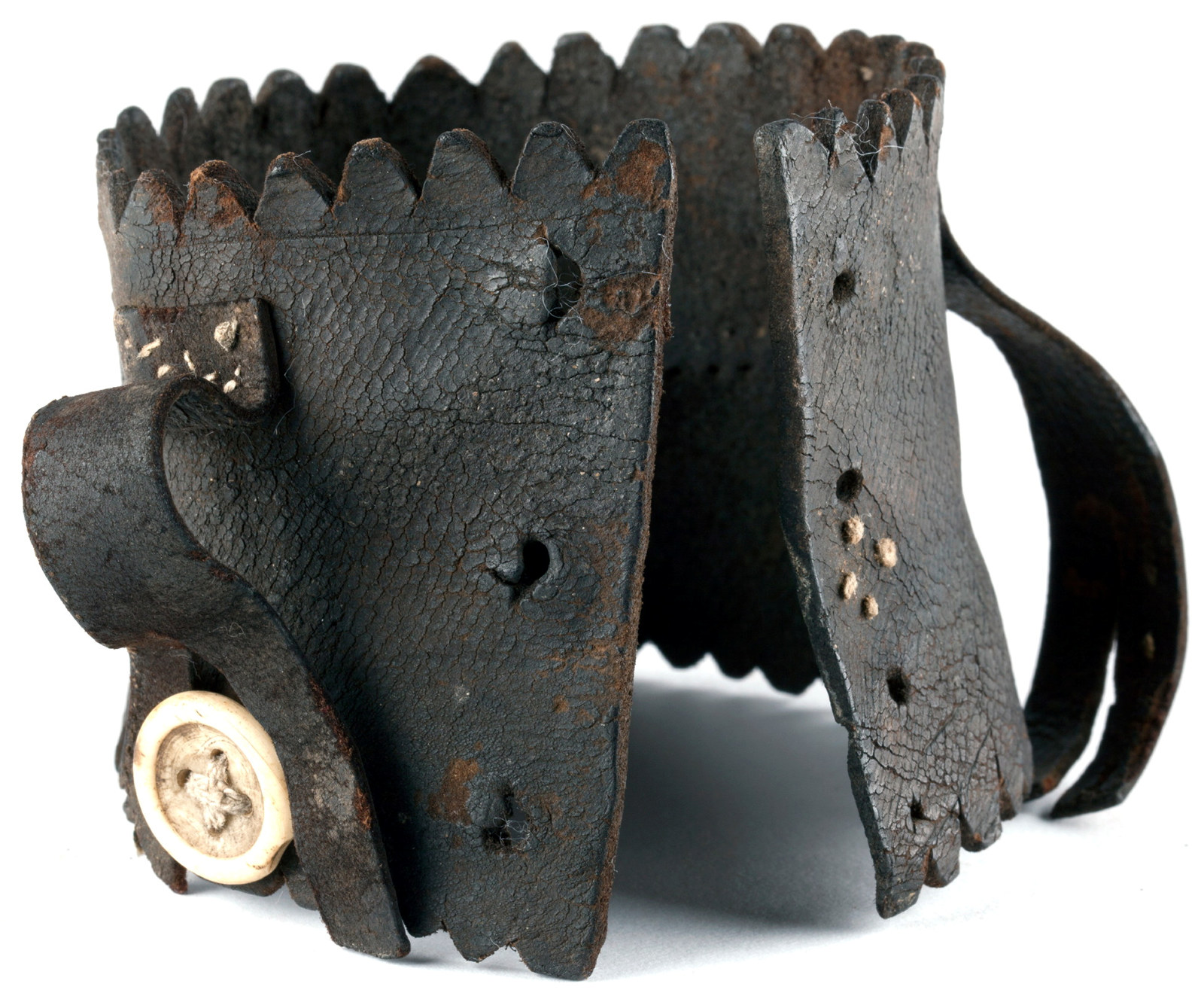
Convict Sydney
Leg Iron Guard
A stunning example of an improvised handicraft, this leather ankle guard or ‘gaiter’ was made to protect a convict’s ankle from leg irons
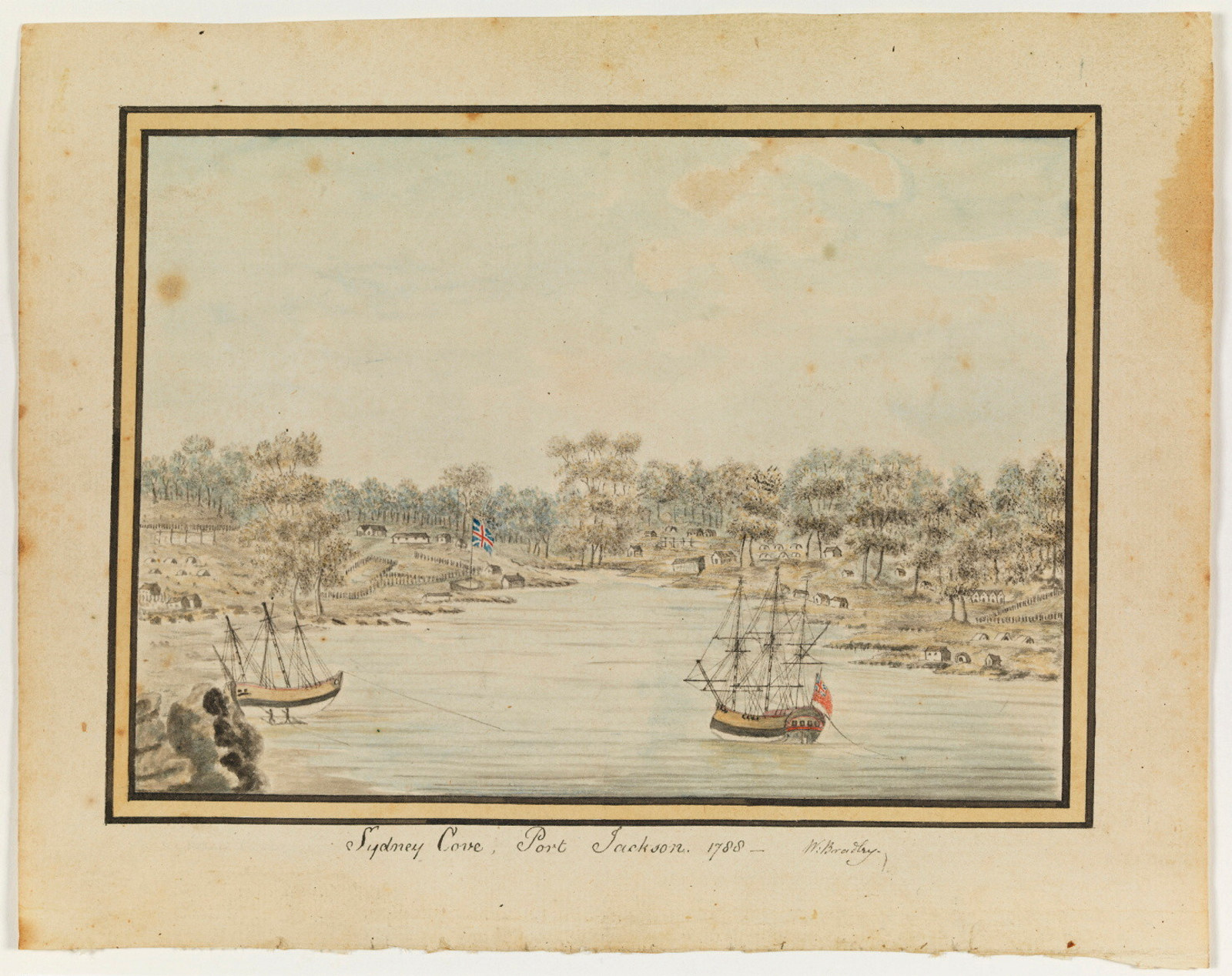
Why were convicts transported to Australia?
Until 1782, English convicts were transported to America, however that all changed after 1783

Convict Sydney
1844 - Day in the life of a convict
Fraying at the edges, these were the Barracks’ darkest days with only the worst convicts remaining
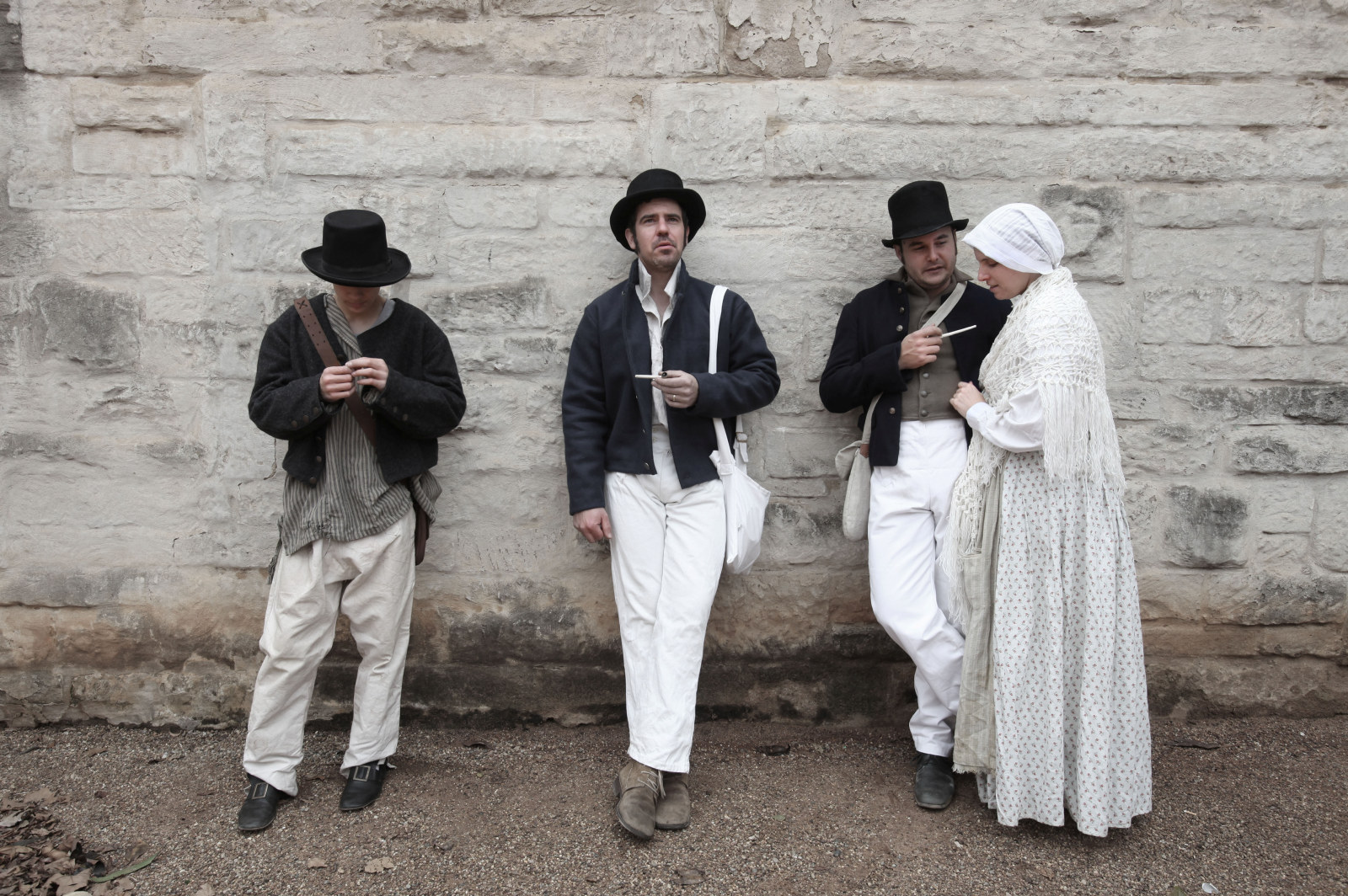
Convict Sydney
1801 - Day in the life of a convict
In the young colony, there was no prisoner’s barrack - the bush and sea were the walls of the convicts’ prison
